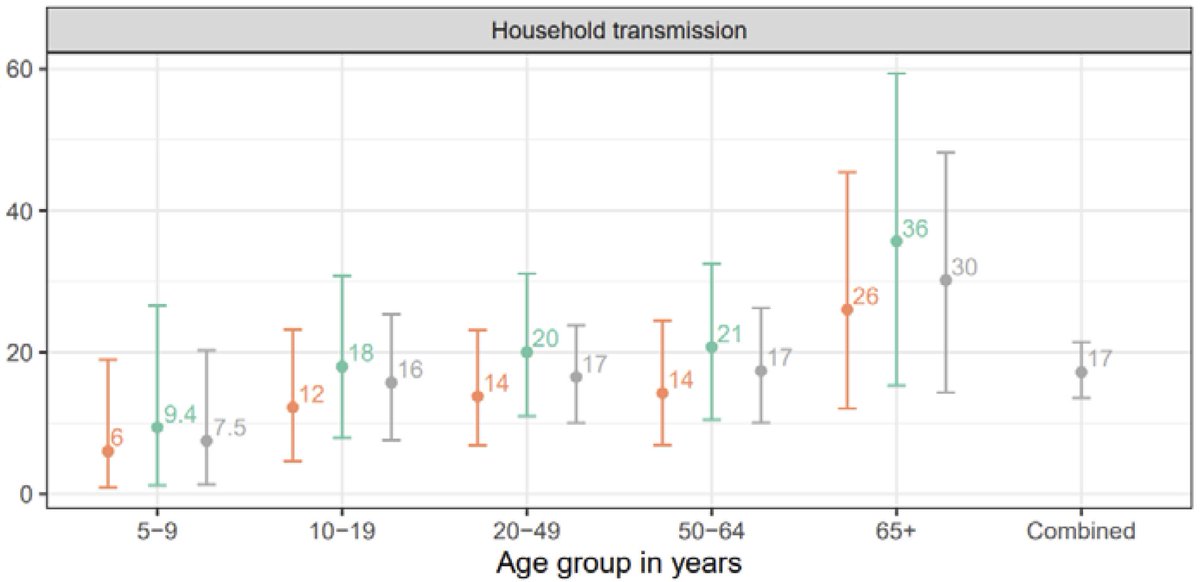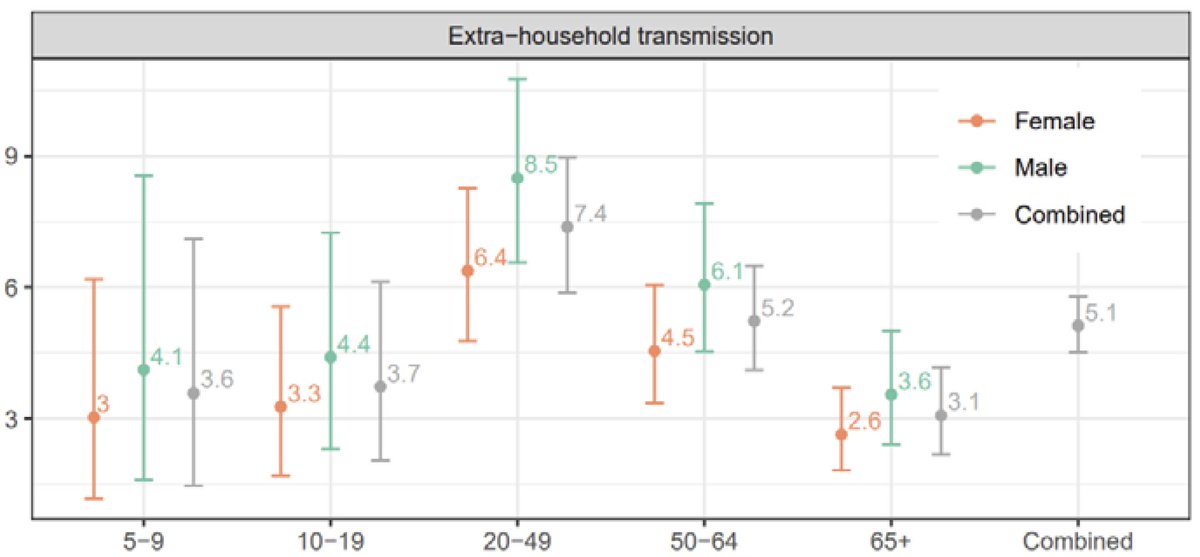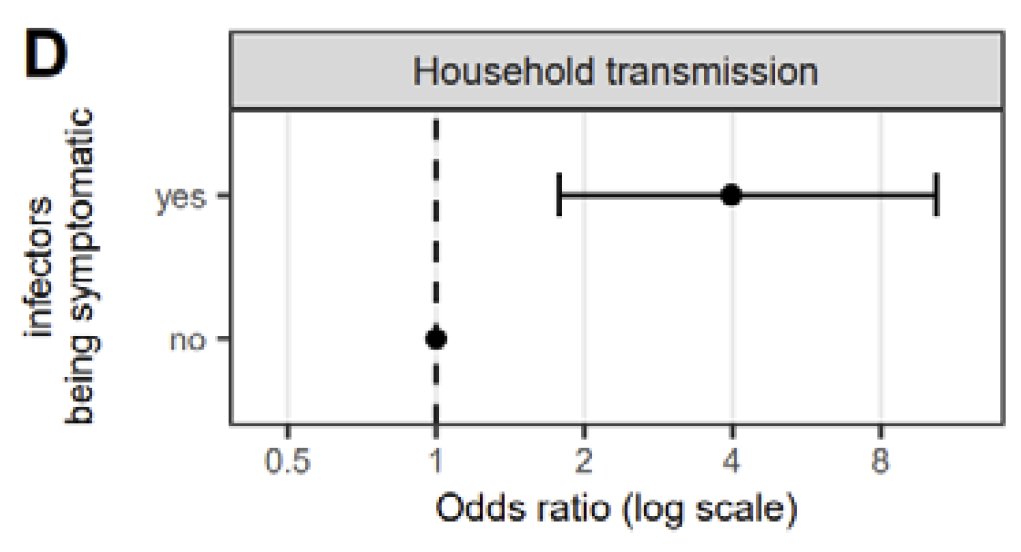Our recent preprint in @medrxivpreprint with @QifangB @andrewazman @datcummings and others uses serological data to show how #SARSCoV2 entered and transmitted within homes in Geneva, Switzerland. Here are a few of the main findings. https://doi.org/10.1101/2020.11.04.20225573 (1/5)
The chance of being infected by an infected household member was 17%. Like other studies we found young kids were less likely to be infected (8%). But this was only apparent in children less than <10 years old . Adults over >65 were more likely to get infected (30%) (2/5)
Over the course of the epidemic wave, there was a 5% chance of being infected by someone outside the household. This was highest in working age adults 20-49 (7%) and lowest in young children (4%) and those 65+ (3%). This pattern is likely driven by social contact. (3/5)
Symptomatic HH members were 4 times as likely to infect another HH member than people who did not report symptoms. Still, HH members not reporting symptoms caused 20% of transmission in households overall. We suspect they are even more important outside the HH...(4/5)
Maybe the biggest surprise for me was that 82% of infections were from non-HH members. But 77% only had 1 or 2 members so it shouldn't have been a surprise. HH structure can really drive this number, and we don't know where infection happened (could have been in homes) (5/5)

 Read on Twitter
Read on Twitter




